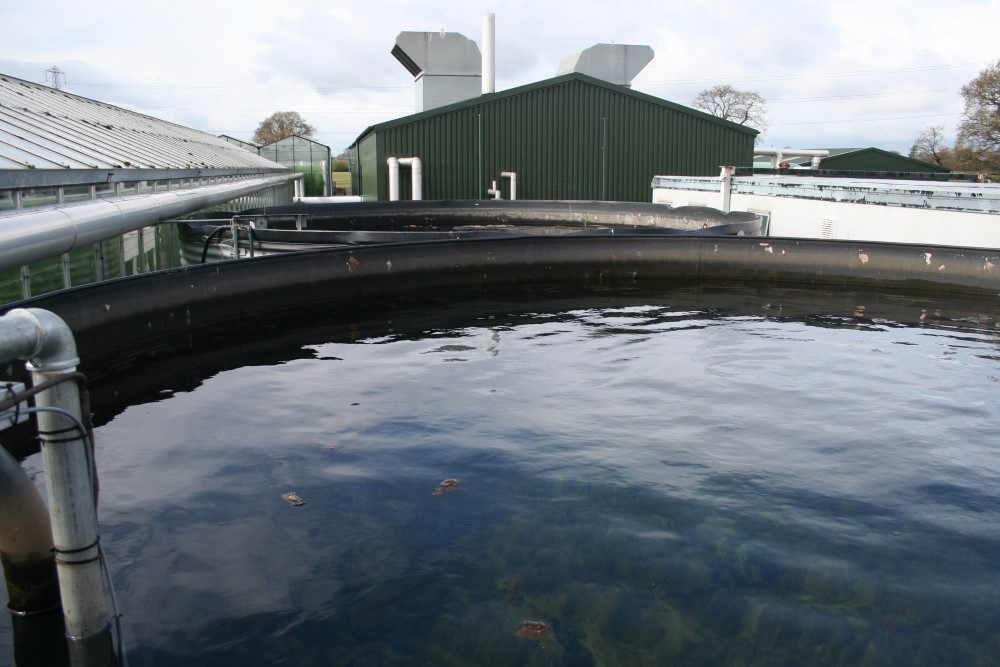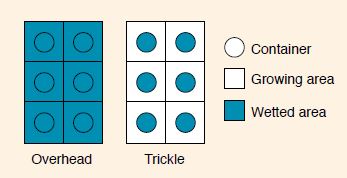Please click here to access the main AHDB website and other sectors.
- Home
- Knowledge library
- Seven C's for irrigation efficiency: control, containment and counting
Seven C's for irrigation efficiency: control, containment and counting
Read about using control, containment and counting for an efficient irrigation system.
Back to: Irrigation energy efficiency
Seven C's for irrigation efficiency: control
The most basic systems should offer accurate timed control of the various zones of an irrigation system. More advanced irrigation control systems start to integrate with sensors like soil moisture content, solar radiation, weather and soil temperature and are often integrated with the glasshouse climate control system. There is a big human factor influence in that all these aspects depend on some level of interpretation to achieve a successful irrigation schedule.
Read more about how you can manage this in our section on Seven C's for irrigation efficiency: care
Precision systems
Precision systems are a bit of a buzzword at the moment. These real-time sensor-driven systems with multiple inputs and knowledge-based algorithms can tweak irrigation input and make a big difference to irrigation performance. Experience shows that energy and water typically have the least impact on the viability of precision systems since energy and water costs only make up a small percentage of overall production costs. The big benefits come from increased growth rates, reduced production times, and reduced losses through reduced root disease pressure.
Seven C's for irrigation efficiency: containment
Most watering systems are notoriously bad at getting water in the irrigation system to the roots of the plant. Read on to find out how you can improve this and get most of the water through the irrigation systems to the plants.
Spray irrigation systems
In a spray irrigation system, water is lost in several ways:
- Up to 25% of delivered water will evaporate from the droplets and the surface of the plants and soil
- Water will be lost through ‘overspray’ at the edges of an irrigated area
- Water will be lost between plants, especially if they are in pots. This is known as the interception loss. Interception efficiency gives a measure of the water reaching the plant pot and is calculated as:
- % = Container top areas
- Container ground area x 100
- It can often be as little as 30%
- Water is lost through bad uniformity. Here, overwatering takes place to compensate for pockets of reduced water delivery.
All these things add up to a large amount of waste, resulting in delivery system efficiencies (accounting for loss of water and wasted electricity) of as low as 15% in some cases and rarely better than 40%.
The additional cost of this is not just in energy. There is the water cost to consider and filtration and treatment costs as well as, in a lot of cases, fertiliser and herbicide.
View of irrigation buffer tanks

Image © NFU Energy
Improving delivery efficiency
Here are a few suggestions:
- The most effective and far-reaching water delivery improvement that can be made by going for direct trickle irrigation. This is only suitable for some types of crop and can lead to problems in maintaining good flow in all pipes. However, from an energy and water utilisation point of view, it can make a massive difference through direct water delivery and much lower system pressures. It’s quite possible to see energy efficiency improvements of 90% or greater by moving to trickle irrigation
- Boom systems are marginally better than fixed nozzle systems as they take one dimension out of the uniformity issue. However, they must have well-controlled delivery as they progress along a bed
- With spray systems, nozzle selection and positioning are very important, as this will determine uniformity and the amount of overspray. Doing regular measurement of uniformity and making adjustments accordingly does help.* Larger droplet size will reduce evaporation
- Placing plants at minimum spacings will maximise the interception efficiency. This might mean more labour in respacing containers later in the growing period, but it can help with irrigation
- Maintenance is important to make sure everything is working as intended and leaks located and repaired
Seven C's for irrigation efficiency: counting
Effective management of irrigation will come from disciplined measurement and recording and taking action as a result of the information gathered.
Aspects to monitor
- The System pressure – which will impact uniformity and overall system efficiency
- Uniformity – through water distribution sampling
- Water use – install and read water meters to detect overuse and signal possible leaks
- Energy use – electrical sub-metering of pumps is useful, especially when linked to water use. Here a specific energy use per m3 of water delivered (kWh/m3) will signal changes in underlying system efficiency
- Climate control computer records – running times of pumps and operation times of valves can be plotted and give a visual record of how and when the system is operating
Benchmarking this data should be done against other sites you own or manage or even different years. You should take care to compare like for like figures as individual organisations’ energy consumption will vary greatly.
Useful links
Visit our GrowSave pages to read more about how you can save energy and improve efficiencies
Go to: Seven C's for irrigation efficiency: core equipment
Go to: Seven C's for irrigation efficiency: care, cost, create


